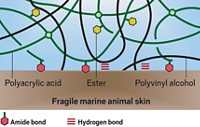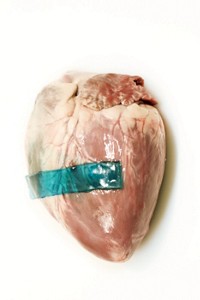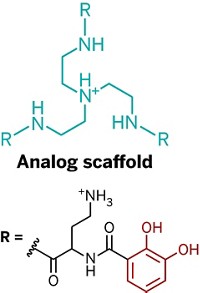Advertisement
Grab your lab coat. Let's get started
Welcome!
Welcome!
Create an account below to get 6 C&EN articles per month, receive newsletters and more - all free.
It seems this is your first time logging in online. Please enter the following information to continue.
As an ACS member you automatically get access to this site. All we need is few more details to create your reading experience.
Not you? Sign in with a different account.
Not you? Sign in with a different account.
ERROR 1
ERROR 1
ERROR 2
ERROR 2
ERROR 2
ERROR 2
ERROR 2
Password and Confirm password must match.
If you have an ACS member number, please enter it here so we can link this account to your membership. (optional)
ERROR 2
ACS values your privacy. By submitting your information, you are gaining access to C&EN and subscribing to our weekly newsletter. We use the information you provide to make your reading experience better, and we will never sell your data to third party members.
Biological Chemistry
Chemical Secrets Of Starfish Stickiness
Biomimicry: Researchers study how the sea creature roams its underwater environment without getting swept away
by Sarah Everts
April 16, 2014

Starfish face a tricky challenge: They need to excrete adhesive from their tube feet to avoid getting swept away by currents, but the secretions’ stickiness must be reversible so the animal can move around to seek food. Researchers in Belgium are now reporting the first analysis of a major protein constituent of these adhesive secretions, a first step towards developing starfish-inspired adhesives that are reversibly sticky on underwater or wet surfaces (Proc. Nat. Acad. Sci. U.S.A. 2014, DOI: 10.1073/pnas.1400089111).
Researchers are particularly interested in the adhesives of underwater creatures because they work on all sorts of wet, unprepared surfaces, such as biofilm-covered rocks. Wet surfaces are often resistant to synthetic adhesives, so substances that adhere under such conditions could be useful in developing naval and medical applications. Most of the research on biologically based adhesives has focused on critters that permanently adhere to objects, such as mussels that tenaciously cling to rocks and ships.
A team led by Elise Hennebert and Patrick Flammang, at the University of Mons, in Belgium, analyzed the eleven proteins found in starfish’s tube feet secretions and then sequenced a massive 3,853-amino acid protein essential for adhesion, called SFP1. The team found that after SFP1 is translated, it is cleaved into four subunits that are then linked together by disulfide bonds, which likely play a role in adhesion. They also found that SFP1 had several carbohydrate-, metal-, and protein-binding domains—sites that could help interaction with other proteins in the adhesive secretion.
The work is “extremely important for unlocking the secrets of wet biological adhesives,” comments Phillip B. Messersmith, a biomedical engineer at Northwestern University, who works on biomimetic adhesion.
“Although much work remains to be done, recombinant or biomimetic forms of SFP1 may be useful practical adhesives for medical and nonmedical applications,” Messersmith says. In particular, Messersmith points out that starfish adhesion does not rely on





Join the conversation
Contact the reporter
Submit a Letter to the Editor for publication
Engage with us on Twitter